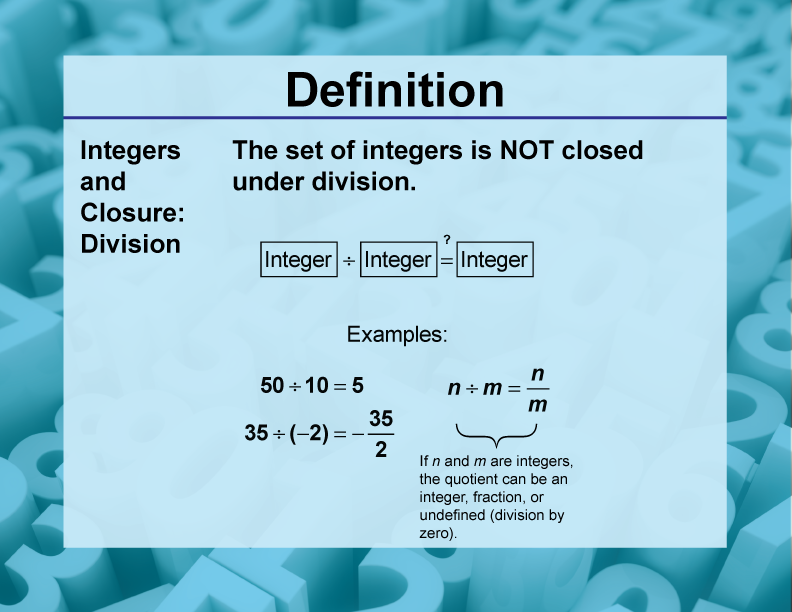
Display Title
Definition--Closure Property Topics--Integers and Closure: Division
Display Title
Integers and Closure: Division

Topic
Math Properties
Definition
The set of integers is not closed under division, meaning that the quotient of two integers is not always an integer.
Description
The concept of closure for integer division is unique among the basic arithmetic operations because it demonstrates a limitation of the integer number system. Unlike addition, subtraction, and multiplication, division does not always produce an integer result when performed on two integers.
This property is crucial for students to understand as it introduces the concept of rational numbers and helps bridge the gap between integers and fractions. It also prepares students for more advanced mathematical concepts such as algebraic fractions and irrational numbers.
In real-world applications, this concept is relevant in situations where we need to divide things evenly, such as distributing items among people or calculating averages. It helps students recognize when a division operation will result in a whole number and when it won't, which is valuable in practical problem-solving.
Teacher's Script: "Let's divide some integers. If we divide 6 by 2, we get 3, which is an integer. But if we divide 5 by 2, we get 2.5, which is not an integer. This shows that integer division doesn't always give us an integer result. Can you find examples where dividing integers does give an integer result? What about examples where it doesn't?"
For a complete collection of terms related to the Closure Property click on this link: Closure Property Collection.
| Common Core Standards | CCSS.MATH.CONTENT.HSN.RN.B.3, CCSS.MATH.CONTENT.HSN.CN.A.2 |
|---|---|
| Grade Range | 9 - 12 |
| Curriculum Nodes |
Algebra • The Language of Math • Numerical Expressions |
| Copyright Year | 2021 |
| Keywords | Closure Property |